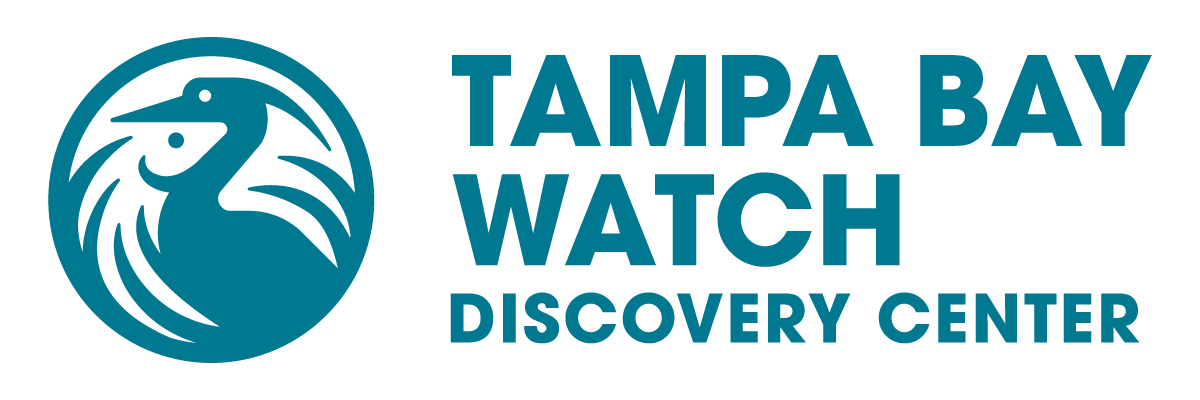A Visit from Lighthouse of Pinellas
Discovery Center educators and interns pose for a photo with visitors from Lighthouse of Pinellas.
The Discovery Center recently hosted a special group of visitors from Lighthouse of Pinellas, a local organization that works to support individuals who are blind or visually impaired. Our education team is passionate about creating innovative ways to make ocean learning accessible to everyone, and they enjoyed designing a program centered around senses other than sight. There are so many ways to experience the bay! We interviewed Aubrey Malone, one of our eco-vessel environmental educators, to learn more about the partnership.
Tell us about the day spent with Lighthouse of Pinellas. How did you adapt the lessons and activities for visually impaired students?
As a team, the Discovery Center educators came up with tactile and auditory ways to illustrate interesting information about estuary and its inhabitants.
For example, we created a spiky dryer ball to represent a striped burrfish’s body, and used a flat lid to represent a flounder. Students could touch these items while we explained how various fish species’ body types help them thrive in their respective habitats.
We also played our bird calls game! Students listened to a sound clip and guessed which bird it came from. Then we passed around some bird artifacts such as feathers and bones to elaborate on bird adaptations.
This partnership is a great example of two nonpforits working together. How did you align Tampa Bay Watch’s mission with the mission of Lighthouse of Pinellas?
The Lighthouse School for the Blind and Low Vision in Tampa has a mission to maximize independence and provide employment opportunities for persons who are blind or visually impaired. With this mission in mind, they asked us specifically to highlight careers in the broad field of marine biology for the students visiting us.
On the eco-vessel, we discussed marine research opportunities with them. Scientific research provides a series of steps to explore and understand what is happening in the world around us, and vision does not have to limit that.
We shared information about the fisheries trawl data we collect, marine mammal acoustics research, and Dr. Amy Bower, who is a visually impaired scientist studying ocean currents in the northern Atlantic ocean!
What was most memorable about this group's visit?
One very special and memorable moment that stuck with me was when the students began describing what they were feeling and hearing, and comparing it to things they recognize and know.
For example, when we were playing the bird calls game, one student compared the sound of a cormorant to the sound of a familiar favorite toy. Another student was so excited to be holding the snook jaw and couldn't believe it was real.
The way the students interacted with our animal artifacts so carefully seemed to paint a picture in their head, and that was very interesting to watch as well. Almost every single student put their arm into the jaws of the fish mouths that were passed around.
As educators, I think we were all grateful for this experience. In addition to having fun, we learned so much about how to adapt our programs for students with different needs.
Thank you, Aubrey! And thank you to Lighthouse of Pinellas for visiting!

